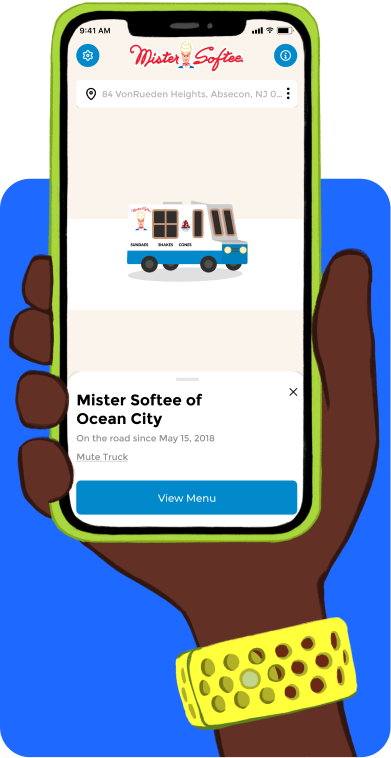Improving a mobile app’s user experience can seem quite a daunting task, so we’ve broken it down into a much more manageable strategy.

In 2024, it goes without saying that user experience is critical to your app’s success. 30% of customers say they’d leave a brand they previously admired behind after a single negative interaction.
In the mobile-first age, the user app experience is the principal way that customers perceive value from your brand.
In a world where 1 in every 4 apps will be abandoned after only one use, suffice to say things are pretty competitive.
Let’s start at the most logical place: the beginning.
Make onboarding easy and fun.
Keep Onboarding Simple and Engaging
The onboarding process should be smooth and engaging for new users. After all, you don’t want them to ‘bounce’ before they even get started.
Utilize Social Media Login Plugins to make it easier for users to login to your app and comfortably store their data. This and more can go a long way to eliminating frustrations encountered during an app’s onboarding flow.
Make it straightforward and engaging. New users should quickly understand how to use your app without feeling overwhelmed. Think of tutorials or interactive guides that are fun and informative.
Some onboarding flows you can use that typically work well include function-oriented, progressive, and benefits-oriented flows.
Stay On Trend With UX Research
In the fast-evolving world of mobile app UX, staying updated on both general and category-specific trends is crucial.
For category-specific insights, examine what competitors are doing to meet user expectations.
For example, food delivery apps now commonly feature real-time order tracking with built-in map APIs, setting a standard for user experience.
Keeping up with these trends ensures your app remains competitive and user-friendly.
Reduce User Friction
Next, focus on eliminating any frustrations users might encounter. This means regularly monitoring user behavior and directly addressing their feedback.
Where are users abandoning your app? Are there any extra steps to complete a task? These are all questions to ask yourself as you enhance the user experience.
Long load times, complicated navigation, or unnecessary steps can drive users away. Aim for a seamless experience where users can achieve their goals effortlessly.
Personalizing the app experience for each user can go a long way in making them feel valued as well, whether that’s adding their username where possible or any other nuance you can think of.

Monitor and Respond to User Behavior
Track how users interact with your app. Tools like heatmaps and analytics can show you which features are popular and which ones are ignored, guiding your improvements.
Understanding high-level trends in your user base is essential for improving your app’s user experience. By analyzing metrics like app installs, uninstalls, session counts, and session durations, you can pinpoint where and when users are disengaging.
Key Performance Indicators (KPIs) like Daily Active Users (DAU) and Monthly Active Users (MAU) help measure user retention and identify areas needing improvement.
Collecting direct feedback from users on various aspects of the app, such as usability and design, provides valuable insights for targeted UX enhancements and makes users feel heard.
Personalize the In-App Experience
To enhance user engagement, analyze customer data such as browsing history, search queries, and past purchases for contextual targeting.
Segment users based on their behavior and preferences. Personalize messaging by using demographics, interests, and location data to send tailored push notifications, emails, or in-app recommendations.
Offer custom notifications, allowing users to select the information they wish to receive and the option to unsubscribe. Use A/B testing to experiment with different messages and optimize content. Additionally, let users personalize the app to enhance their overall experience.
Tailor the app experience to individual users. This could be as simple as greeting them by name or as complex as recommending content based on their activity.

Incorporate Gamification and Other Compelling Design Elements
You can better engage users by instilling motivation at key points in their app journey using marketing tactics. This includes sparking curiosity, creating scarcity, offering incentives or creating urgency.
For example, a gaming app can trigger a user’s dopamine system with timely in-game rewards, while an eCommerce app can create scarcity with limited-time offers.
Regularly updating your app’s design is crucial to keeping the UX current. Trends in UI/UX design evolve, and your app should too.
This includes modifying the interface, adding new components, and refreshing logos and layouts. New design elements like updated buttons, menus, and brand colors can keep your app visually appealing and up-to-date.
Examples of Mobile UX Design Pitfalls to Avoid
Understanding what not to do in mobile UX design can be just as informative as knowing best practices. Here are some common pitfalls to avoid:
Hidden Fees at Checkout: Surprise charges can deter users from making purchases and reduce the likelihood of return visits. Users simply lose trust.
Distracting Autoplay Features: Auto-playing videos or audio can feel intrusive and take control away from users, leading to a negative experience.
Messy Content and Clunky Navigation: Disorganized layouts and difficult navigation frustrate users. Lack of search functionality or unresponsive buttons can also drive users away.
Errors Leading to Dead Ends: Apps without troubleshooting or support features can leave users stranded and frustrated when they encounter issues.
Final Thoughts on Improving User Experience

When all else fails, turn to the review section of your app. Often times, users will report their sticking points there and you will be able to see common themes to tackle during app maintenance.
Making user interaction intuitive and enjoyable for your app can lead to higher user retention and overall engagement. A good UX simplifies navigation and reduces frustration, encouraging users to spend more time on the app and increasing their likelihood of making in-app purchases or utilizing services. Moreover, a positive UX can boost brand loyalty and word-of-mouth referrals, as users are more likely to recommend an app that provides a seamless experience.
At the end of the day, improving user experience for your app is a job that will never truly be done. Google just announced they’ll be overhauling apps in the Play Store that are severely outdated or that no longer serve users.
Design trends will come and go, technology will grow outdated and user needs will shift.
The question is, how will you will respond?
Do you need a trusted development partner to enhance your mobile app? Reach out to us for your free consultation.
Since 2009, we have helped create 400+ next-generation apps for startups, Fortune 500s, growing businesses, and non-profits from around the globe. Think Partner, Not Agency.
Find us on social at #MakeItApp’n®

















